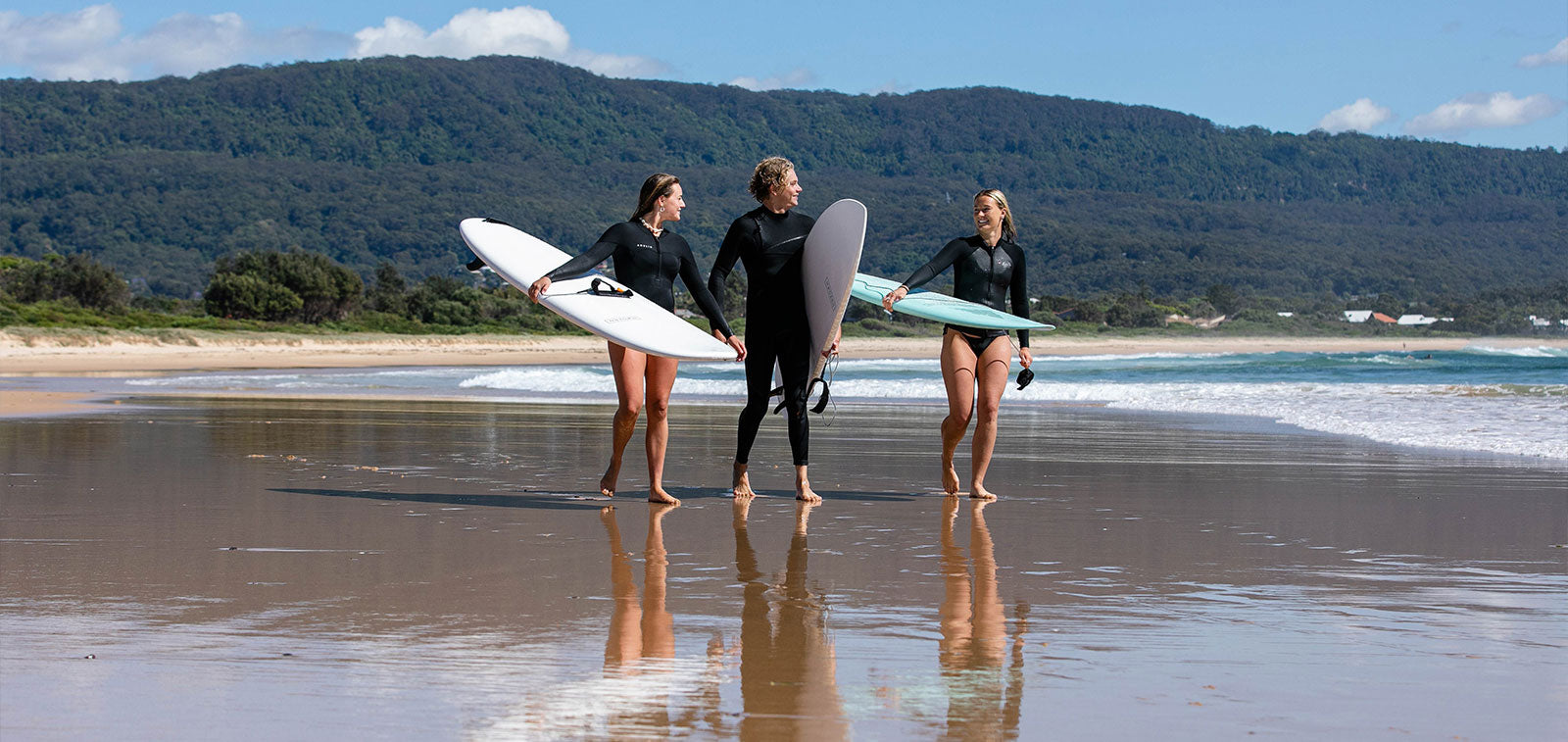
How to wax a Surfboard
Ever wondered how to achieve a great wax job? We’ll reveal all the tips and tricks below.
How to choose the correct wax.
There are many different types of wax suited to different water temperatures. Harder wax is used as a basecoat or for warmer water, and softer wax is used for cold water and as a top-coat. For this exercise we’re going to use a mid density wax that will suit a range of water temperatures. If you’re re-waxing a used board make sure you clean it thoroughly before waxing it again.
How to make the wax coat really grippy.
Firstly, I like to use the edge of the block to create a series of diagonal lines. Start at one end of the board and cover the desired area. Next apply more diagonal lines, but this time working in the opposite direction. It’s important not to press too hard, even pressure works best, and try to keep the lines close together. Now go across the board, again covering the entire area. The idea here is to make a textured pattern that will start to form a series of small bumps, which will make the wax coat really grippy.

At this point you’ll notice the block is starting to form a flat side. Using this flat side, start making longer strokes up and down the board, and here you should notice the small bumps really starting to form.
Follow the criss-cross pattern until the bumps are at least 1 millimetre in height. If your wax is smudging you’re pressing too hard, and you don’t want the wax to go too far around the rails either as this will create drag.
Finally make some circular motions in your foot zones and keep building up the bumps.

And there you have it.
For extra grip we recommend giving your board a light rub before every surf.


